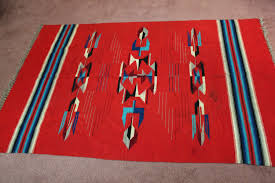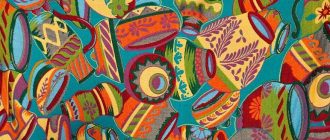Mexican antique rugs express the country’s centuries-old weaving tradition characterized by intricate patterns on tightly woven natural fibers. Their beauty coupled with lasting quality makes them valuable as antiques. Read our guide for more facts and information…
History reveals that rug-weaving originated in China, and promulgated to Persia and Europe. American hand-knitted rugs are known to have their origin in the eighteenth century. The design and knots used in traditional Mexican rug-weaving is known among communities and families. Oaxaca’s central valley is regarded as the historic center of rug-weaving in Mexico.
Origin of Mexican Rugs
The Zapotecs were involved in weaving in the Oaxaca valley region as early as 500 BC. They traded their textiles and rugs throughout Mesoamerica, and even after the Aztec conquest their weaving art was well admired. Subsequent to the Spanish conquest, the Dominican friars introduced wool and gave sheep to the Teotitlán as well as Santa Ana del Valle weavers. Characterized by lengthy fibers, the wool is known for its strength which simplified the spinning process. The friars also introduced the foot pedal, which was employed to weave rugs, serapes and tapestries. The Spaniards introduced the spinning wheel to produce lighter and smoother threads.
Inspirational Designs & Patterns
The traditional rug patterns display Zapotec legends and iconography related to the natural and mystic world. Some designs are innovative while some reveal inspirations from traditional design elements, such as Navajo patterns. A high quality Zapotec rug has twenty threads per inch. Rugs that have cotton warp are stronger in comparison to all-wool rugs and high quality antique rugs are characterized by well-defined edges. The denser the rug, the longer it lasts.
Use of Natural Dyes
Antique Mexican rugs were dyed with natural products that involved careful and laborious extraction and preparation methods. They exude a subtlety and beauty that cannot be compared to chemical dyes, and the colors and shades do not fade. Dye sources consisted of plants, animals and minerals, including lichen, twigs, flowers, berries, rock moss and walnut husk. Deep magentas were made from cochineal insect, and Indigo was made from the a-il plant leaves. Some of the dyes were used as trade items during the pre-Hispanic era.
Exemplary Mexican Patterns
Traditional Mexican rugs were in sober gray, black, white and other natural color wools. The ‘Zapotec Sun’, also known as the ‘Flower of Oaxaca’, is a noteworthy pattern consisting of a large central rosette amid a deer and jaguar with flora in the background. The ‘greca’ is an inspiration from the elaborate stone reliefs belonging to pre-Hispanic monuments. The Saltillo serapes of the nineteenth century are renowned wool blankets that symbolized Mexican manhood. Worn as a cloak, blanket and trench coat, it is reminiscent of the pre-Columbian ‘tilmatl’, a Spanish blanket.
The Central Valley areas still produce rugs employing the traditional techniques, colors, as well as motifs. The value of antique Mexican rugs is determined from their origin, material and the quality of weave.





